Immersive Experiences
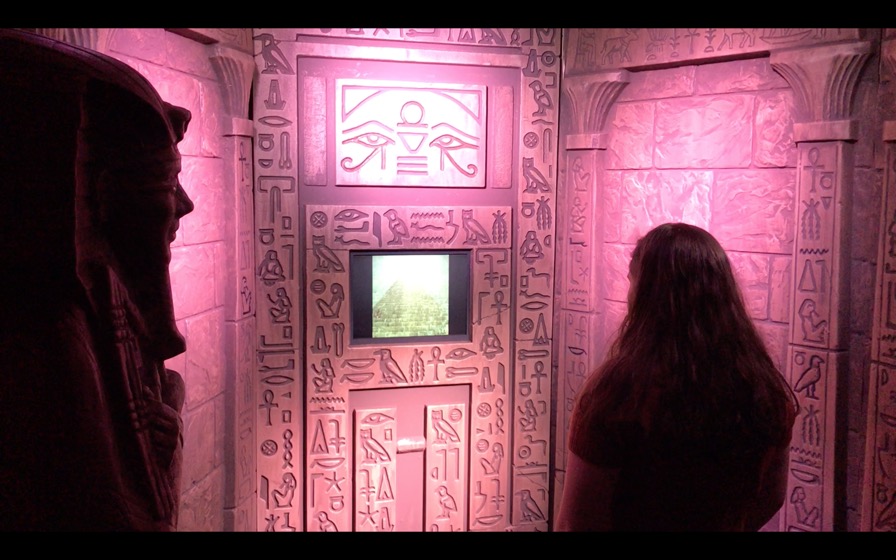
I produced content for an educational experience designed for an Egyptian tomb set.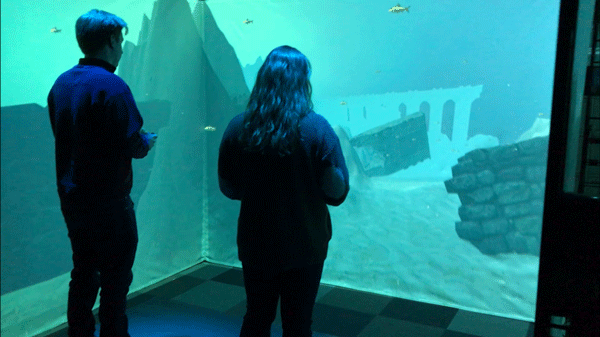
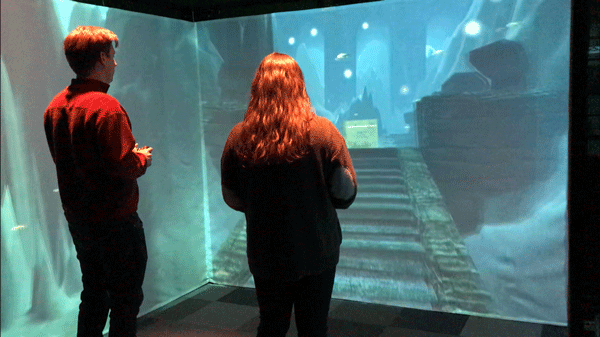
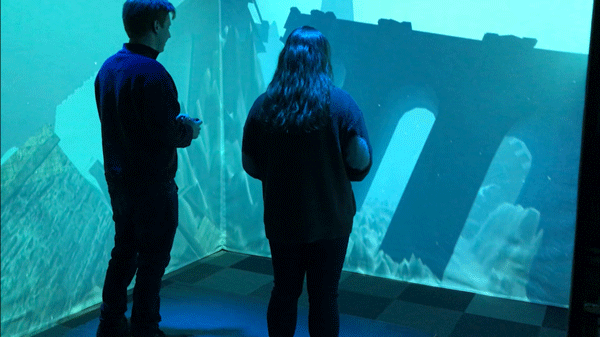
Additionally, I designed a collaborative game produced for the CAVE where players communicated with each other to traverse an underwater environment. The story involved mythology surrounding Merlin and finding his spellbook which I modeled in MAYA. I also designed the layout of the 3D environment in UNITY.
Give Kids The World - StarDesk
Duration: 10 Weeks
Platform: Physical Installation [MR]
Client: Give Kids The World Village - Orlando, FL
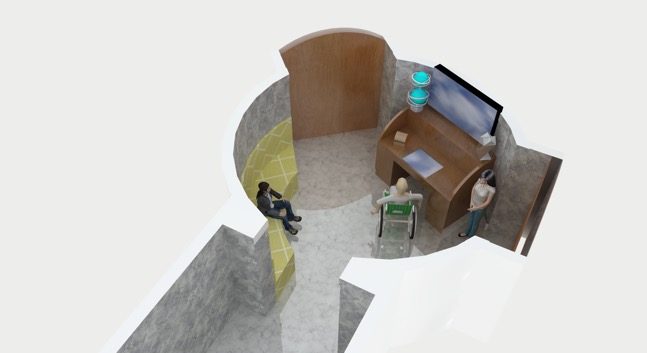
Give Kids The World Village is a nonprofit resort located in central Florida that provides children with life-threatening illnesses and their families week-long vacations at no expense to them. In the summer of 2018, I was granted an endowment through the Entertainment Technology Center at Carnegie Mellon University to work with a nonprofit of my choosing. I utilized this endowment to playtest the Tom Foolery Animatronic show interface and develop new experiences for the Village.
The Star Program at GKTW is one of the most utilized and poignant entertainment offerings at the Village. Each child is given a star to personalize and then through "magic" the Star Fairy, places their star in the sky at the Castle Of Miracles. Operationally, there is a problem as the Castle of Miracles is running out of space for each of the stars and the technology used to make this magic happen is slowly becoming obsolete.
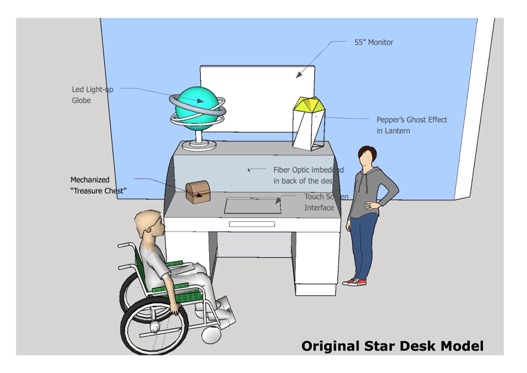
In response to running out of space, GKTW has developed the Star Observatory where the stars are placed on panels for initial viewing and then rotated out to storage until the family returns to see the star again. The Observatory is beautifully themed and solves this underlying problem for the future.
I was tasked with envisioning a new procedure for the Star Fairy to collect the child's star after they decorate it. Previously, the child would place the star in a treasure box and the Star Fairy would appear on a series of monitors to then take the star to then place in the sky later that evening so the family could then return later in their trip to view in the "sky."
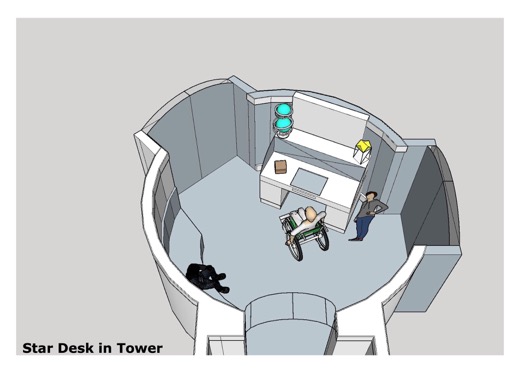
As mentioned, the technology was becoming antiquated and the process clunky at best. Children of varying abilities need to have the same experience and the way the chest was designed, not all children could place their star in the treasure chest. To decorate the star they would also employ different processes.
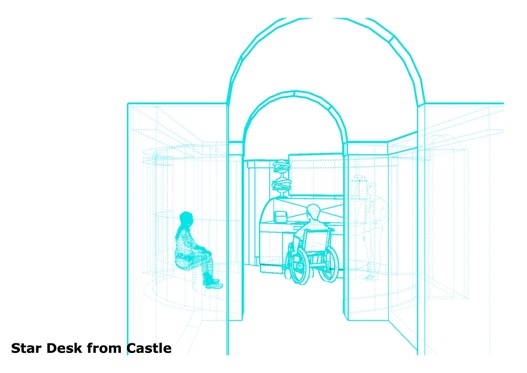
I envisioned a Star Desk, which would be placed in the underutilized Star Tower to mirror the theming in the Star Observatory. I wanted to update the experience utilizing different kinds of technology, but rely on robust and tried and true tech solutions to minimize future maintenance problems.

The solution I came up with is a kiosk in the form of a desk that would allow guests of all abilities to approach it and decorate their star. After decorating, the guest would then place it in a treasure box reminiscent of the original experience that would rock back and forth as the Star Fairy collects it. 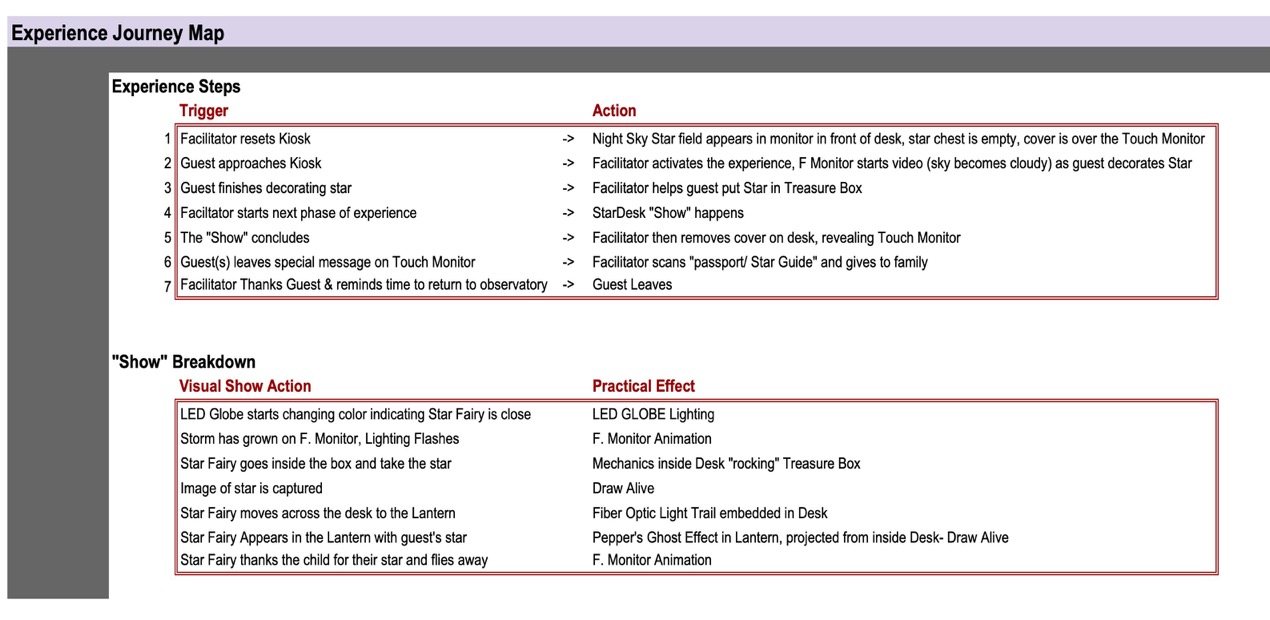

I originally imagined seeing the Star Fairy take the star by means of projection mapping, but after determining the finalized installation space, there is nowhere to seamlessly hide the projectors, and it would add additional maintenance headaches with changing the bulbs, etc. The solution I narrowed in on is using a fiber optic trail to track the fairy as she flys out of the monitor, collects the star, and then moves into a lantern placed on the desk.
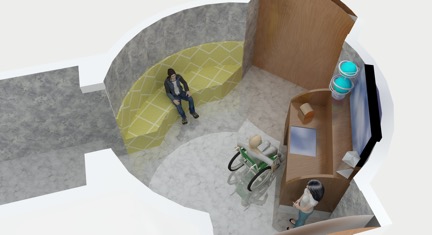
The Star Fairy would appear in the lantern through a "pepper's ghost" effect holding the child's personally decorated star. After running tests, I found that it would be possible to capture an image of the reflective star after they placed it into the treasure chest, giving even more believability to this very magical experience.
The fairy then would fly off back into the monitor disguised as a picture portal to the sky for her to place the star later that evening. I pitched the project to the client and they are very enthusiastic about implementing the desk concept, and it is currently in an RFP process with vendors.
Give Kids The World - Animatronic
Team Size: 7 (Josh Danzig, Rajat Gupta, Niharika Jain, Raisa Chowdhury, Alexandra Gobeler, Atul Goel)
Duration: 30 Weeks
Platform: Animatronic Figure [MR]
Client: Give Kids The World Village - Orlando, FL
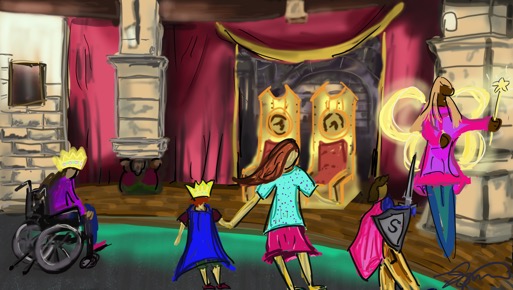
Miracle Workshop was a partnership between Carnegie Mellon's Entertainment Technology Center and Give Kids The World, a nonprofit resort located in central Florida that provides children with life-threatening illnesses and their families week-long vacations at no expense to them. GKTW tasked our team of seven to take an existing puppet, "Tom Foolery," and retrofit him to become an audio-animatronic figure that performs in experiences such as storytime.
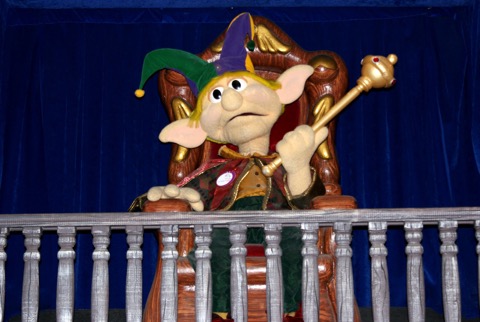
As Creative Director & Producer, I was charged with developing the creative content, overall vision, and production process of the project. I utilized my expertise in live entertainment to create captivating content for the guests at Give Kids The World Village: developing a character profile, writing the scripts, casting the voice talent, directing & recording the audio session, setting the audio cues, and directing the show experience.
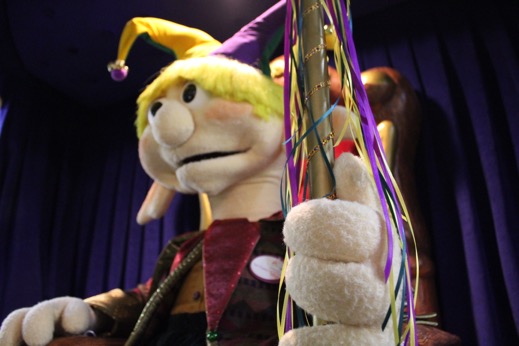
When the team hit a roadblock with determining what kind of functions our animatronic was to have, I worked with the engineering team to define the functions based on Tom's character profile. I worked with the client to make sure that our experience would hit all of the metrics desired and make sure the mythology would be consistent with other entertainment offerings.
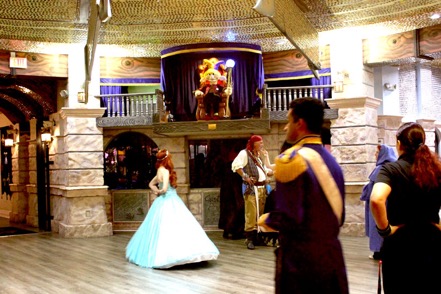
In addition to maintaining the overall vision for the show, I worked with the design team on the mechanics for the animatronic. I facilitated engineering work with our various vendors and utilized my expertise in biomechanics to pinpoint the appropriate range of motion for each of the animatronic figure's five functions. By recording humans performing similar actions, I calculated the ROM for each movement and then passed that data on to our lead designer for implementation in the mechanical design.
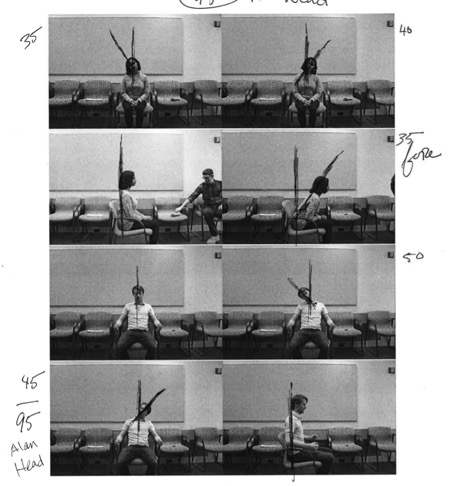
I worked with each of our team members to make sure that Tom would be robust and withstand the rigors of daily operation. Since Give Kids The World is a volunteer-based organization, having the staff generate content in real-time is not feasible. I took their operational demands and distilled them into content that would be appropriate for various times of the day. From jokes in the afternoon, a good night show that runs in tandem with an existing animatronic, to a show that thanks the various sponsors of GKTW, and more; I synthesized and anticipated the client's current and future needs. I also produced seasonal content to give Tom even more implied awareness and keep the content fresh throughout various times of the year.
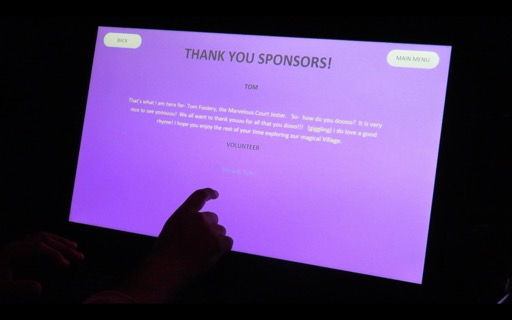
The content then runs off of a large touch screen monitor in the back of the house. To create the illusion that Tom is interacting with the children and guests in real-time, staff facilitates the "performance" of Tom in the front of the house. They have the option of using cue cards to read their lines so the barrier to running the sophisticated animatronic show is extremely low and requires little training. This was imperative for the success of the project as the client does not have the bandwidth for intensive training or maintenance.
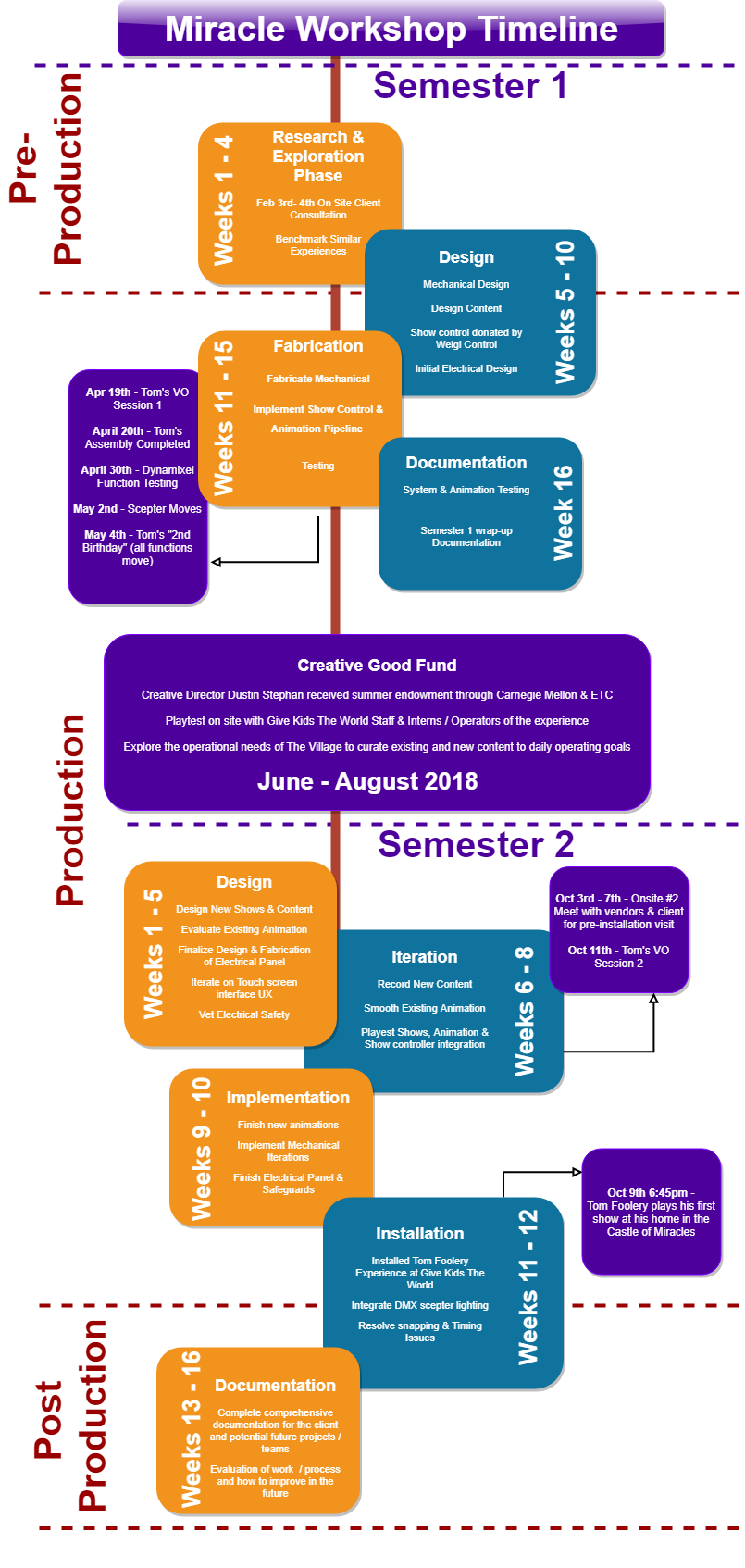
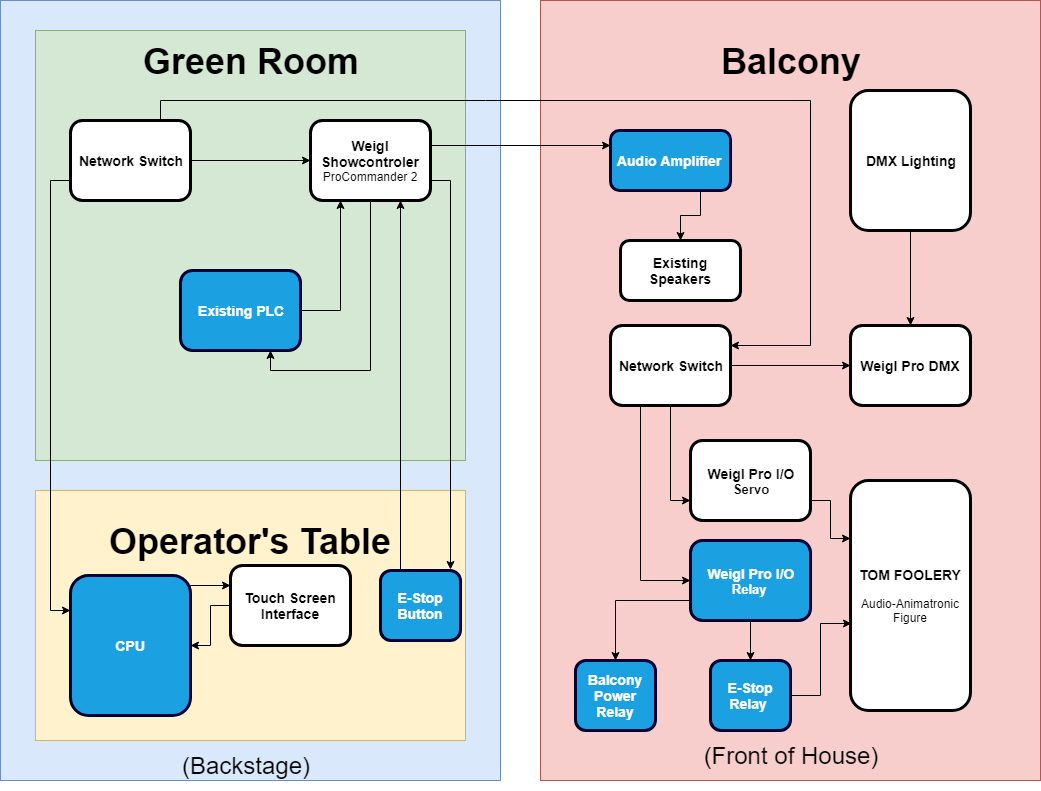
I maintained the production timeline to keep the project & installation on time and within budget. I worked with the technical director to create technical documentation including a block diagram to facilitate communication between our team, client, and vendors.
This just scratches the surface of all of the work I helped the team with. I also designed his new scepter and reached out to industry professionals to help fabricate the finished product. His animation was developed utilizing new industry processes of using MAYA and 3D animation software to animate the figure and then convert the data into signals to be read by the show controller. I worked hand in hand with each team member, industry experts, our vendors, and the client to develop a successful installation for a very deserving demographic.
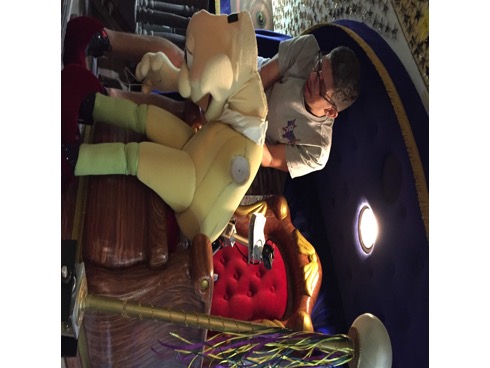
To read more about our animatronic, please view our project websites:
Miracle Workshop Semester 1
Miracle Workshop Semester 2
VIDEO LINK (Composite)
VIDEO LINK (Content Sample)
MORE VIDEO CONTENT
Children's Museum of Pittsburgh
Team Size: 5 (Daryl Choa, Min Pan, Weidi Tang, Jinyi Ye)
Duration: 15 Weeks
Platform: Physical Installation & Digital 3D environment [XR] / [MR]
Client: Children's Museum of Pittsburgh - Pittsburgh, PA
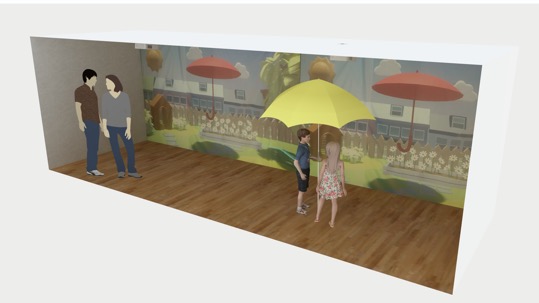
One Small Act was a collaboration between the Children's Museum of Pittsburgh and Carnegie Mellon's Entertainment Technology Center. The Museum has an initiative based on having children practice Qualities of Kindness. As part fo this initiative, they are retrofitting their current "Attic" exhibit Space into a new 1,200 square foot gallery loosely based on Fred Roger's Neighborhood and Kindness. The museum tasked my team to envision a new installation for this exhibit.
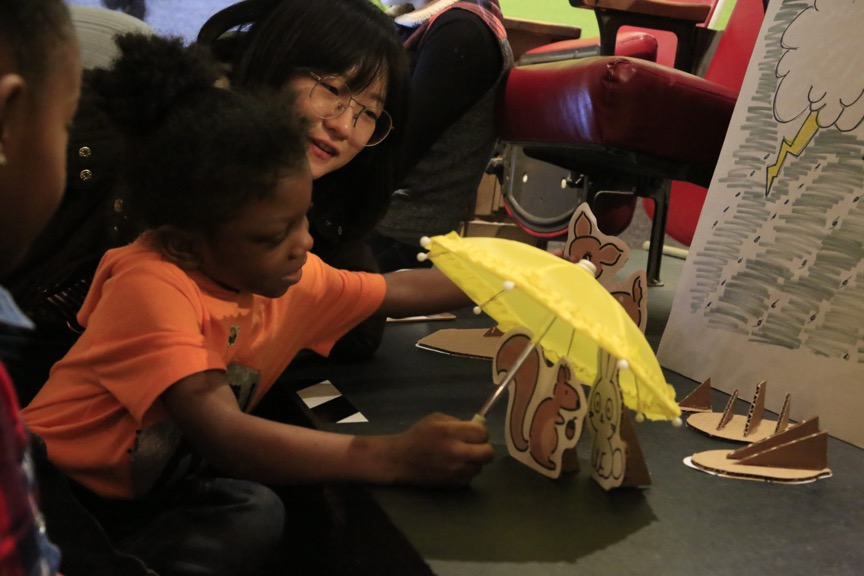
Playtesting with paper prototypes
As Creative Director and Producer for my team, I held the creative vision for the project while being a conduit of communication between the team and client. I also lent my expertise in design to shape the experience for guests.

Although the museum initially wanted a Virtual Reality experience; with the target demographic being children 0 - 12 (really 5 - 8), we quickly determined that would not be a compelling experience especially given the directive from the client that the installation should spark dialogue between caregiver and child.
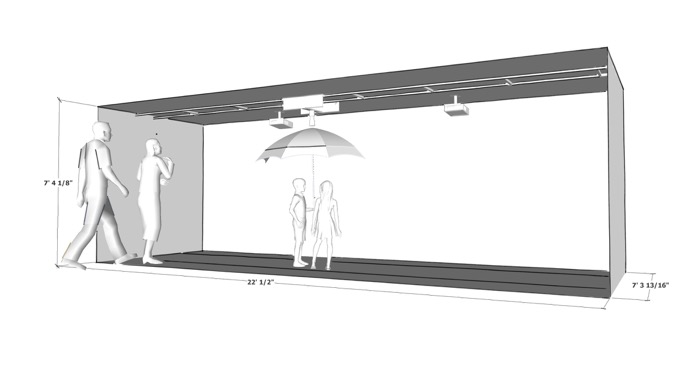
We wanted the experience to be communal, so landed on a Mixed Reality experience combing physical props with digital elements. The inspiration was based on the imagery of a stranger holding an umbrella to shelter someone from the rain. We used this as a starting off point and quickly imagined a scenario where sheltering animals from the rain would be a compelling experience for children.
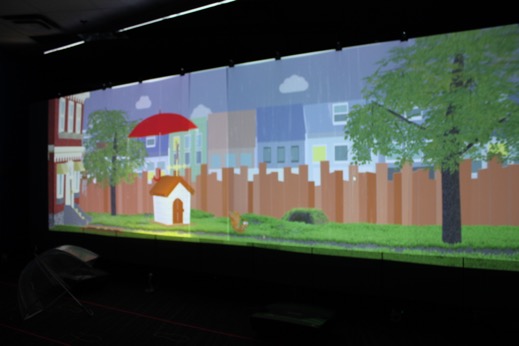
The installation will utilize a large oversized prop umbrella on a linear track that is matched 1:1 with a digital umbrella that the guest will control to enact qualities of kindness. Since we cannot control the entry and exit points of guests in the museum; The experience is non-linear, with a sunny day to rainy day cycle on a loop.
I facilitated the communication between the programmer and the fabricator at the museum to make sure installation will be seamless. I kept the production on track while carrying the creative vision and making sure all of the digital and physical elements fit our installation and the exhibit as a whole.

Prototype setup at the ETC with VR tracker attached to an umbrella
I procured the technology to playtest the experience using VR tracking hardware and short-throw projectors and utilized my design skills to create documentation showcasing all of the elements. I maintained the Google Drive, ran meetings, kept the budget and timeline in check, and developed all of the audio for the experience.
For information on the project, please visit the project website:
One Small Act
VIDEO LINK